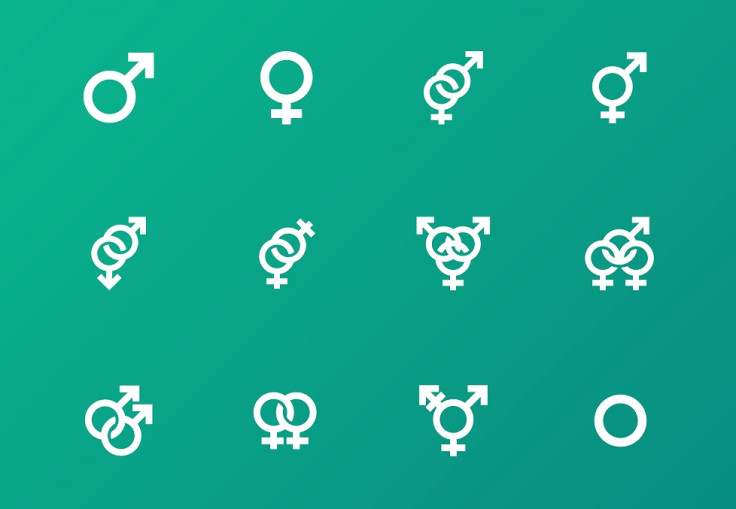Being asexual: Sexual attraction is like a language I can't speak

Michael Doré was 15 when he realised he didn't share the obsession with sex the other teenagers at his all-male school were experiencing. "I couldn't really understand what the big deal was with sex and sexual attraction. It was like a language I couldn't speak. I didn't really feel there was anything wrong with me, but I wanted to fit in and I certainly didn't want to make a fuss about being different so I tried to avoid the subject."
Doré is asexual – someone who does not experience sexual attraction. Unlike celibacy, which is a choice, asexuality is an intrinsic part of who an individual is. While a lack of sexual attraction seems an alien concept for some, Doré is not alone. The Asexual Visibility and Education Network (AVEN), where he is a part of the project team, has more than 50,000 members worldwide. Approximately 1% of the British population identify as asexual.
"I identify as an aromantic asexual"
Despite a growing awareness of asexuality, there are still challenges. When Doré was a teenager in the mid-1990s, anti-gay attitudes were rife in schools and tolerance of LGBT rights was still a developing phenomenon.
There was a limited understanding and awareness of asexuality. As a result, Doré experienced homophobic bullying.
When I was younger I was sure that relationships would lead to sex eventually and I was quite repulsed by the idea of sex, and still am.
"There was also a lot of homophobia around, especially in the school environment I was in, and as asexuality wasn't known about, a lot of people would mistake it for being gay as 'you are not into women'," he says.
Thanks to organisations such as AVEN, asexuality is becoming increasingly visible. Challenges remain, however, such as the misconception that it is the same as – or even as cover for – being homosexual. Doré says there are two key orientations: romantic and sexual.
"Someone can be romantically gay, straight, bi or pan – respectively attracted romantically to the same, other, both or all genders – and not experience sexual attraction and thus be asexual," he says. "Sometimes such people might be respectively described as homoromantic, heteroromantic, biromantic or panromantic asexuals. I identify as an aromantic asexual as I don't experience either sexual or romantic attraction."

"Attitudes towards sex vary"
Another misconception is that asexual people are celibate or hate sex. But once again, the attitudes towards sex vary from person to person. As with gender, sexuality has a broad spectrum.
"An asexual can be sex-positive, sex-negative or anything in between," Doré says. "Some asexual people do have sex, especially those in a relationship with a non-asexual person. It's all down to the individual. What we have in common is a lack of sexual attraction – nothing more."
There is absolutely nothing wrong with not experiencing sexual attraction, and no-one should be made to feel they are less of a person on account of it
"When I was younger I was sure that relationships would lead to sex eventually and I was quite repulsed by the idea of sex, and still am," Doré adds.
Asexual people have the same emotional needs as anyone else – and as is the case with everyone, these needs are fulfilled in a variety of different ways. Although Doré has never been in a relationship, he has fulfilling, close bonds in a non-sexual and non-romantic way. "I have close friends and family, same as most other people – but things just don't go further than that!"
For others, non-sexual, romantic relationships are a part of their lives. Heather, 27, from Singapore, is currently in her first relationship with someone who does not identify as asexual.
"I was definitely apprehensive about dating someone who isn't asexual, due to the potential for mismatched expectations," she says. "However, my partner has been incredibly understanding and supportive, seeking my consent every step of the way and taking as the 'default' that we will not be having sex. I do think that it is possible for asexual and sexual people to be together, provided there is mutual respect and communication."
Although this is Heather's first relationship, other people she has been on dates on have been less accepting. "I have definitely experienced the cold shoulder from people I have gone for dinner with when I have refused to reciprocate pre-intimate gestures such as hugging or holding hands."
"We want to make asexuality more visible"
Since AVEN was founded in 2001, it has helped create discussion, public acceptance and has provided a platform for the world's largest asexual community to flourish.
"We want to make asexuality more visible. If people don't know it exists then it both hurts potential asexual people who don't know where they stand, and might try to make themselves fit a box they don't belong in, and it can hurt other people too, for example, partners of asexual people," Doré says.
When Heather discovered AVEN in her early 20s, she found other stories and experiences – an entire community – that she could relate to. "I started to see myself less as an anomaly, and became increasingly comfortable and confident as an ace individual," she adds.
Although she has not experienced discrimination, Heather says she is only out to a few close friends and family as she finds it difficult to explain asexuality to people. "There is very little awareness about this orientation in general, and even less visibility in Asia, as compared with the US or UK."
"Personally, I am proud to be asexual. There is absolutely nothing wrong with not experiencing sexual attraction, and no-one should be made to feel they are less of a person on account of it."
© Copyright IBTimes 2025. All rights reserved.






















